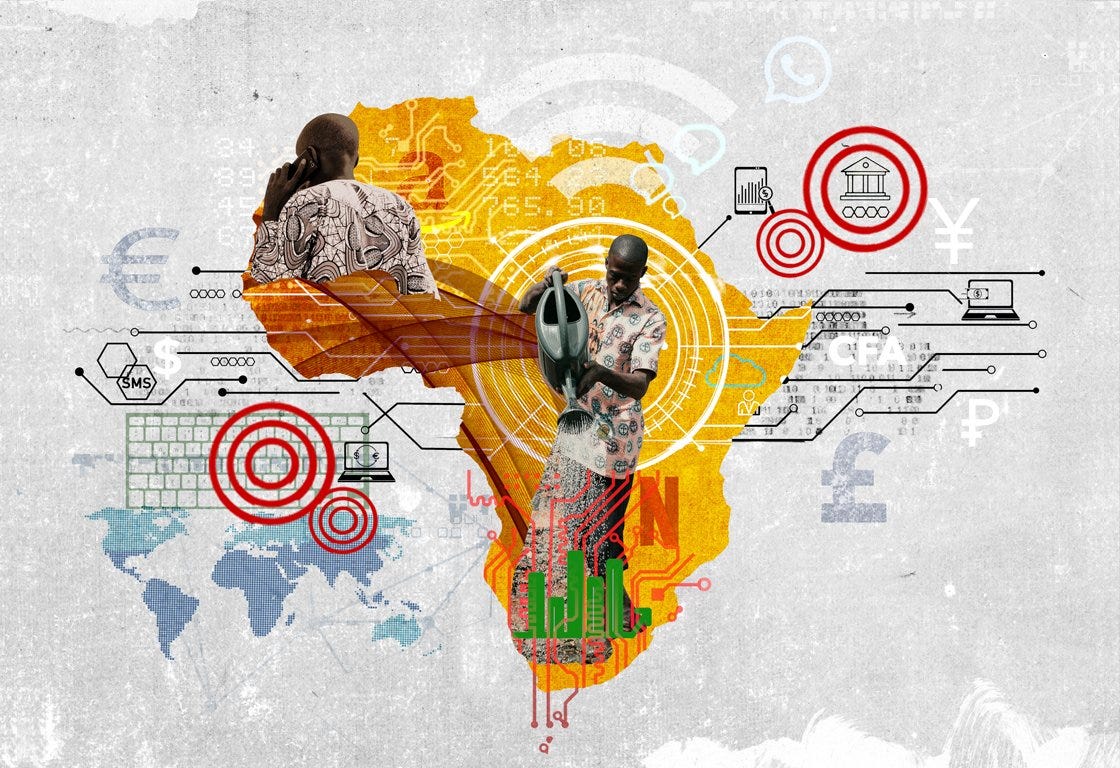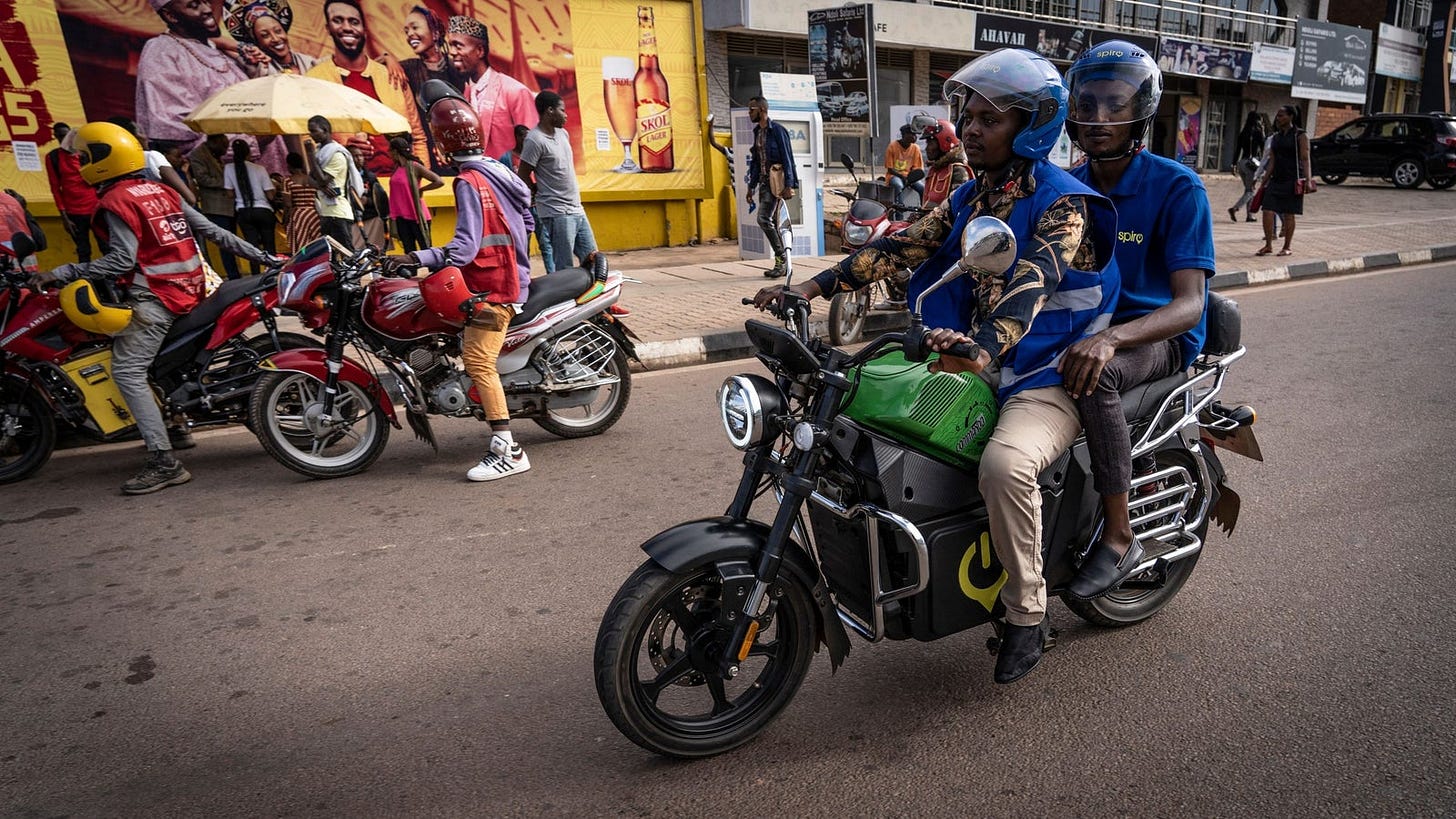🌯Inclusive FinTech Knowledge Bites [Week #71]
Fintech’s infrastructure shift is here: from dirt roads to distribution rails. Explore Transsion’s two-speed innovation & Nigeria’s PoS hidden challenges
Hey,
I’m Hugo Pacheco, and this is The Barefoot Economist, a newsletter where, every week, I break down three essential stories on last-mile technology, emerging market innovation, and financial inclusion. Consider it your bite-sized takeaway to stay informed, sharp, insightful, and easy to digest.
This week on The Barefoot Economist:
🔌 Fintech’s Infrastructure Moment: Distribution, Dollars, and Dirt
🧪 Inside Transsion’s Two-Speed Innovation Model
🔍 Unmasking Nigeria’s PoS Struggle
Enjoy your reading!
🔌 Distribution, Dollars, and Dirt Roads: African Fintech’s Infrastructure Moment
If you’re not solving for logistics, currency risk, and trust, you’re not scaling.

After a decade of optimism, pivots, and pivoted-again business models, African fintech stands at a new inflection point. It’s no longer about raisi
ng the most or onboarding the fastest. It’s about surviving the present while building for a harder, messier, more infrastructural future.
recent Forbes Africa piece delivers a timely reminder: African fintech isn’t just tech, it’s infrastructure, trust, logistics, and survival strategy.Here’s what stood out to me—and why it matters for founders, investors, and policymakers playing the long game.
🌯 The Barefoot Insight
Here’s what the smart operators are doubling down on:
Distribution wins. PeriodMarketing doesn’t scale access. Logistics do. The fintechs eating market share are the ones who solved last-mile reach with agents, field ops, and hybrid delivery, not those who hired the best UX designer in Berlin.
If your solution assumes strong signal and uninterrupted electricity, you’ve already excluded your market.
Solve for Survival, Not StatusThe African middle class is small, overstretched, and often a mirage. Products that help people make or save money today get adopted. Everything else is a pitch deck feature.
MKopa, Sun King, and B2B fintechs didn’t just sell tech. They sold daily value.
Affordability and Profitability, Not Either-Or.African fintechs no longer have the luxury of scaling at a loss. CAC has to be recovered quickly. Operating models must be local-first. Smart teams are ditching imported cloud bills and bloated headquarters.
If your cost base is in USD but your revenue is in shillings or naira, you’re playing with fire.
Capital Is Strategy. Own Your Stack.Post-2022, the capital stack matters as much as the product. Fintechs backed solely by foreign VCs are feeling the sting of forex volatility, political pushback, and mismatched expectations.
Capital is no longer neutral. It directs, demands, and, when misaligned, derails.
Infrastructure is Not a Boring Sidebar. It’s the Whole Game.Electricity, roads, APIs, smart regulation, these aren’t “nice-to-haves”. They’re the conditions under which fintech either thrives or dies.
No infrastructure? No scale. No matter how sleek your app is.
African Fintech Isn’t Broken. It's Just Graduating to Ecosyststems.Fintech isn’t just about leapfrogging; it’s about laying the groundwork. Infrastructure. Local capital. Real distribution. And yes, sometimes, regulatory patience.
The billion-dollar companies of this decade won’t just build wallets. They’ll create systems that work in a world of intermittent connectivity, persistent cash, and radically local economics.
🧭 Hybrid Go-To-Market Strategies in Africa
Last week, I got to wrap up a deep dive on blending digital and human channels with hybrid go-to-market strategies in Africa in a webinar with
at Financial Services Intelligence Hub!What we covered:
🧭 Why “hybrid” beats “digital-only” in Africa’s fragmented markets
🧱 How agents, kiosks, and pay-as-you-go are rewriting access
🌍 What cash, tech, and community trade mean for your GTM
🧪 Inside Transsion’s Two-Speed Innovation Model
What happens when a $1 phone playbook meets $1,500 motorbikes?

Transsion, the Chinese firm behind Tecno, Itel, and Infinix, is now applying its distribution-first playbook to Africa’s electric vehicle market. With 50% of Africa’s smartphone sales under its belt, it’s betting on TankVolt e-bikes and trikes to dominate two- and three-wheeler mobility.
Africa’s EV market is projected to grow from $17.4 billion in 2025 to $28.3 billion in 2030. Governments are becoming more supportive of EV adoption, exemplified by Niger State's order of 5,000 units.
👀 Snapshot of Their EV Play:
Launched in Uganda (2023); now active in Nigeria, Kenya, Tanzania, and Ethiopia.
Ranks in top 3 for EV unit sales in Africa.
Targeting government fleets, logistics companies, and fintech-financed ownership models (Watu, M-Kopa, Mogo, etc.).
TankVolt bikes are priced at ~$1,500 vs. $1,800+ for local rivals like Dodai and Spiro.
Key Differentiators:
Vertical integration: Transsion owns its manufacturing, unlike most African EV brands.
Battery-as-a-Service: Leasing swappable batteries to charging stations.
After-sales & local parts: A major deciding factor for partners like Swap Station Mobility (Nigeria).
🌯 The Barefoot Insight
Transsion isn’t just entering the EV market. It’s stress-testing a hypothesis:
Can dominance in distribution leap across product categories?
We’ve seen this movie before.
Transsion didn’t stumble into 50% smartphone market share in Africa. It built it on the back of a highly disciplined, bifurcated operating model: explore aggressively, then exploit relentlessly.
Now, as it moves from SIM cards to swappable batteries with TankVolt, it’s doubling down on the same two-speed playbook—one designed to navigate uncertainty at the edge while maximising efficiency at the core.
But let’s be clear:
Building a new growth engine (mobility) while managing an existing one (phones) puts you on opposite ends of the innovation spectrum.
So, how does Transsion do both?
Let’s break it down.

📌 Why This Matters (Especially in African Markets)Too many companies try to do both in the same room.
But explore vs. exploit requires different people, KPIs, and risk appetites.
In Africa, where infrastructure gaps, regulatory flux, and informal economies dominate, this matters even more. Because:
🧭 Exploration means reframing problems: "How do we deliver uptime without a national grid?"
📈 Exploitation means extracting value: "How do we improve unit margins across 14 fragmented markets?"
Only a few players have the ops maturity and capital discipline to run both engines at once. Transsion’s doing it—and watching how it evolves could help fintechs, agent networks, and mobility startups alike sharpen their own growth models.
Transsion isn’t just selling e-bikes.
It’s building an infrastructure stack for Africa’s informal mobility economy, from devices to distribution to digital rails.
If you’re building in fintech, logistics, or energy, this is the blueprint:
Explore where the market is messy. Exploit where you’ve earned clarity.The magic lies in knowing which engine you’re building, and funding it accordingly.
⚡ Disruption Risk Assessment Template ⚡
The disruption risk assessment helps identify how healthy or at risk a business model in your portfolio is and how much attention it needs to be improved and de-risked. The assessment includes two dimensions:
Business model performance: reveals positioning on the exploit portfolio
Business model trend: indicates likely future positioning
Complete the test to get 12 radical business model innovation insights inspired by emerging markets!🔍 Unmasking Nigeria’s PoS Struggle

Nigeria’s PoS economy is a street-level solution to systemic gaps in financial infrastructure. Agents earn their keep by charging for access—₦100 at a time—but the true cost is hidden: operational stress, exposure to theft, and razor-thin margins. Most aren’t scaling businesses; they’re cushioning a broken system.
In a country where over 50% of PoS transactions still rely on cash, these agents are both the interface and the infrastructure of financial inclusion. But make no mistake: the boom hides burnout. And for every agent you see processing ₦100,000 before noon, there’s one going home with barely enough to stay afloat.
The question isn’t how much they make. It’s how long they can keep going.
🌯 The Barefoot Insight
It’s worth pausing to acknowledge what’s missing—and why that matters. On paper, Nigeria’s PoS network looks like an insurgent success story: ₦18 trillion in transactions in 2024, a 69 per cent year-over-year jump. Yet beneath those headline numbers lie critical blind spots that shape both the opportunity and the risk for agents.
Reliable data on earnings, churn, and loss rates is virtually nonexistent Most estimates come from anecdotal interviews, leaving us to piece together a picture from fragmented sources. Without robust, real-time metrics on agent performance and failure points, fintech providers and policymakers are flying blind, unable to identify where subsidies, training, or security investments will yield the highest returns. In a system where a few kilometres can mean a threefold difference in transactions, we lack the granular geospatial data needed to optimise network density and inform agent placement.

Regulatory and infrastructure context remains tenuousElectronic money transfer levies, weekly withdrawal caps, and inconsistent network uptime introduce volatility that agents absorb at their own expense. Yet we rarely quantify how these policies distort margins or disincentivise agents from operating in low-traffic areas. Nor do we fully appreciate the long-tail impact of spotty data coverage; agents are forced to juggle multiple SIM cards or forgo faster digital rails, which heightens the risk of fraud and operational downtime. In essence, the regulatory framework acts as both an enabler and a drag, but we haven’t mapped those contours with enough precision.
Contextual disconnect between macroeconomic pressures & PoS microeconomy High inflation, currency volatility, and intermittent cash crunches skew transaction volumes, and yet we still treat agent earnings as a steady stream rather than a highly elastic function of wider financial stressors. Without anchoring our analysis to Nigeria’s broader economic cycles, we risk misjudging the resilience of these entrepreneurs.
How many agents fold when inflation squeezes consumer liquidity? How do remittance inflows or FX fluctuations ripple down to the kiosk level? These questions remain largely unanswered.
Acknowledging these gaps in data, regulation, and macro-micro linkages, we can better frame what follows: a distilled set of takeaways that shine a light on both the promise and the pressure points of Nigeria’s PoS universe.
See you next week, or reach out!
Hugo Pacheco




